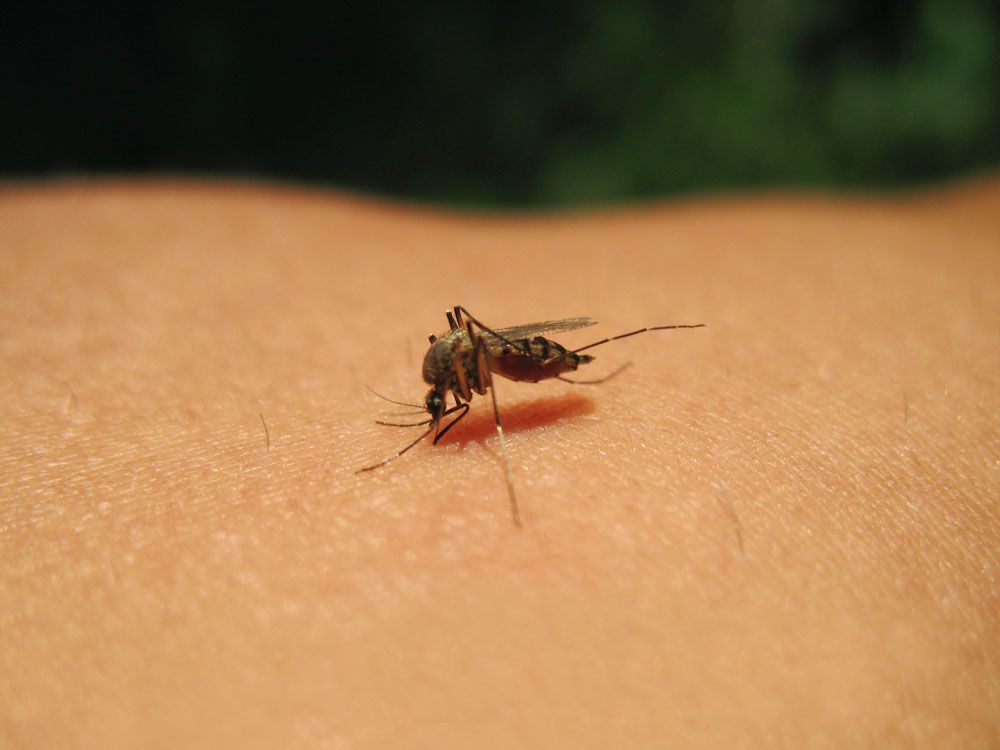What is Lyme disease, the condition Justin Timberlake was diagnosed with?
Author of the article:Washington Post
Washington Post
Victoria Bisset, The Washington Post
Published Aug 01, 2025 • 3 minute read
As he wrapped up his Forget Tomorrow Tour, singer Justin Timberlake shared that he’s had some recent health challenges – including a diagnosis of Lyme disease.
It’s a condition that can be debilitating, and one that experts say is on the rise. But what is Lyme disease and what causes it?
What did Justin Timberlake say about Lyme disease?
“If you’ve experienced this disease or know someone who has – then you’re aware: living with this can be relentlessly debilitating, both mentally and physically,” Timberlake wrote on Instagram on Thursday.
“When I first got the diagnosis I was shocked for sure,” he continued. “But, at least I could understand why I would be onstage and in a massive amount of nerve pain or, just feeling crazy fatigue or sickness.”
The Grammy-winning singer said the diagnosis forced him to consider stopping touring but added: “I decided the joy that performing brings me far outweighs the fleeting stress my body was feeling. I’m so glad I kept going.”
During the tour, Timberlake rescheduled a number of shows due to health issues.
Other celebrities have also spoken about their experience with Lyme disease, including pop star Justin Bieber and rock singer Avril Lavigne.
What is Lyme disease and what is it caused by?
Lyme disease is spread by bacteria from the bites of infected black-legged ticks. It’s named after Lyme, Connecticut, where the disease was first identified in the United States in 1975.
In the United States, around 476,000 people across the nation are diagnosed and treated for the disease every year, according to recent estimates from the Centers for Disease Control and Prevention.
While ticks that carry the bacteria most common in the Northeast, Mid-Atlantic, and upper-Midwest, those who work or spend time in grassy areas where ticks live are more likely to be at risk, as well as those who have pets such as dogs that can bring them home.
The disease is also common in Europe and in south-central and southeastern Canada.
What are the signs and symptoms of Lyme disease?
For many people with Lyme disease, a common early sign is a rash, which may look like a bull’s eye and can itch or feel warm to the touch.
Other symptoms include fever, headache, fatigue and joint stiffness.
If it’s not treated, Lyme disease can cause more serious conditions including joint infection, nervous system diseases and inflammation of the heart.
Some people may also suffer from post-Lyme disease syndrome, which can cause ongoing nerve pain, fatigue and memory problems.
Lyme disease can be confused for other health conditions, and vice versa, so it’s important those who have symptoms speak to a health care provider.
Is there a cure for Lyme disease?
Most people who get Lyme disease make a full recovery after a few weeks of antibiotics. But there are no vaccines against Lyme disease – one shot approved in the United States was discontinued in 2002, with the producer blaming low demand.
But Pfizer and French pharmaceutical company Valneva are carrying out human trials for a new vaccine that could protect against North American and European strains of Lyme disease; Pfizer said last year that participants had received three doses and would be monitored until the end of the 2025 Lyme disease season.
The University of Massachusetts Medical School’s MassBiologics is also working on a seasonal preventative shot for the disease.
How can you prevent Lyme disease?
To avoid being infected with Lyme disease – or any of the other potentially serious diseases such as Babesiosis that ticks can transmit – it’s important to avoid getting bitten in the first place. That means wearing repellent, walking in the middle of trails and avoiding brushy areas where possible.
The Mayo Clinic also advises choosing light-colored clothing to help you see any ticks, avoiding open-toed shoes or sandals, wearing long-sleeved shirts and long pants and tucking clothing in.
After a walk, you should check yourself and your dog for ticks (You can find more information on avoiding tick bites and what to do if you find a tick on yourself or your dog here.)
It’s important to take precautions even if you’ve had Lyme disease before, as you can get it again.

 torontosun.com
torontosun.com
Author of the article:Washington Post
Washington Post
Victoria Bisset, The Washington Post
Published Aug 01, 2025 • 3 minute read
As he wrapped up his Forget Tomorrow Tour, singer Justin Timberlake shared that he’s had some recent health challenges – including a diagnosis of Lyme disease.
It’s a condition that can be debilitating, and one that experts say is on the rise. But what is Lyme disease and what causes it?
What did Justin Timberlake say about Lyme disease?
“If you’ve experienced this disease or know someone who has – then you’re aware: living with this can be relentlessly debilitating, both mentally and physically,” Timberlake wrote on Instagram on Thursday.
“When I first got the diagnosis I was shocked for sure,” he continued. “But, at least I could understand why I would be onstage and in a massive amount of nerve pain or, just feeling crazy fatigue or sickness.”
The Grammy-winning singer said the diagnosis forced him to consider stopping touring but added: “I decided the joy that performing brings me far outweighs the fleeting stress my body was feeling. I’m so glad I kept going.”
During the tour, Timberlake rescheduled a number of shows due to health issues.
Other celebrities have also spoken about their experience with Lyme disease, including pop star Justin Bieber and rock singer Avril Lavigne.
What is Lyme disease and what is it caused by?
Lyme disease is spread by bacteria from the bites of infected black-legged ticks. It’s named after Lyme, Connecticut, where the disease was first identified in the United States in 1975.
In the United States, around 476,000 people across the nation are diagnosed and treated for the disease every year, according to recent estimates from the Centers for Disease Control and Prevention.
While ticks that carry the bacteria most common in the Northeast, Mid-Atlantic, and upper-Midwest, those who work or spend time in grassy areas where ticks live are more likely to be at risk, as well as those who have pets such as dogs that can bring them home.
The disease is also common in Europe and in south-central and southeastern Canada.
What are the signs and symptoms of Lyme disease?
For many people with Lyme disease, a common early sign is a rash, which may look like a bull’s eye and can itch or feel warm to the touch.
Other symptoms include fever, headache, fatigue and joint stiffness.
If it’s not treated, Lyme disease can cause more serious conditions including joint infection, nervous system diseases and inflammation of the heart.
Some people may also suffer from post-Lyme disease syndrome, which can cause ongoing nerve pain, fatigue and memory problems.
Lyme disease can be confused for other health conditions, and vice versa, so it’s important those who have symptoms speak to a health care provider.
Is there a cure for Lyme disease?
Most people who get Lyme disease make a full recovery after a few weeks of antibiotics. But there are no vaccines against Lyme disease – one shot approved in the United States was discontinued in 2002, with the producer blaming low demand.
But Pfizer and French pharmaceutical company Valneva are carrying out human trials for a new vaccine that could protect against North American and European strains of Lyme disease; Pfizer said last year that participants had received three doses and would be monitored until the end of the 2025 Lyme disease season.
The University of Massachusetts Medical School’s MassBiologics is also working on a seasonal preventative shot for the disease.
How can you prevent Lyme disease?
To avoid being infected with Lyme disease – or any of the other potentially serious diseases such as Babesiosis that ticks can transmit – it’s important to avoid getting bitten in the first place. That means wearing repellent, walking in the middle of trails and avoiding brushy areas where possible.
The Mayo Clinic also advises choosing light-colored clothing to help you see any ticks, avoiding open-toed shoes or sandals, wearing long-sleeved shirts and long pants and tucking clothing in.
After a walk, you should check yourself and your dog for ticks (You can find more information on avoiding tick bites and what to do if you find a tick on yourself or your dog here.)
It’s important to take precautions even if you’ve had Lyme disease before, as you can get it again.

What is Lyme disease, the condition Justin Timberlake was diagnosed with?
It's a condition that can be debilitating, and one that experts say is on the rise.


![9e6449c2c5d756bb80aef1ffaaec50bc8337e848[1].jpg 9e6449c2c5d756bb80aef1ffaaec50bc8337e848[1].jpg](https://forums.canadiancontent.net/data/attachments/28/28575-02a17fffadad5edc725f4634d82392c3.jpg)


![386a9b77121d88265225176c90f8206387597cba[1].jpg 386a9b77121d88265225176c90f8206387597cba[1].jpg](https://forums.canadiancontent.net/data/attachments/28/28578-7b8bc8e6e510c22db53b8ce28a534bd9.jpg)


![11.-wasted-sunflower-sea-star-off-calvert-island-3_photo-courte_297971731[1].jpg 11.-wasted-sunflower-sea-star-off-calvert-island-3_photo-courte_297971731[1].jpg](https://forums.canadiancontent.net/data/attachments/28/28617-862102ae2786b3bfb8a822aa6f9a8fcc.jpg)

![3.-alyssa-gehman-diving-burke-channel_photo-courtesy-of-bennett_297971571[1].jpg 3.-alyssa-gehman-diving-burke-channel_photo-courtesy-of-bennett_297971571[1].jpg](https://forums.canadiancontent.net/data/attachments/28/28620-3adefb98809c4795e45fb2890a8b6dd5.jpg)

![2.-pycnopodia-in-burke-channel_photo-courtesy-of-bennett-whitne_297971545[1].jpg](/data/attachments/28/28615-eafa14a6c6aa3d695cbb40367569495b.jpg)
![14.-urchin-barren-in-hakai-pass_photo-courtesy-of-grant-callega_297971781[1].jpg](/data/attachments/28/28616-dcd6c5a00abe6801c8f70e7961069afa.jpg)
![5.-alyssa-gehman-at-marrowstone-marine-field-station_photo-cour_297971635[1].jpg](/data/attachments/28/28619-591bb289e814a5c9b347fb4d5199d737.jpg)













